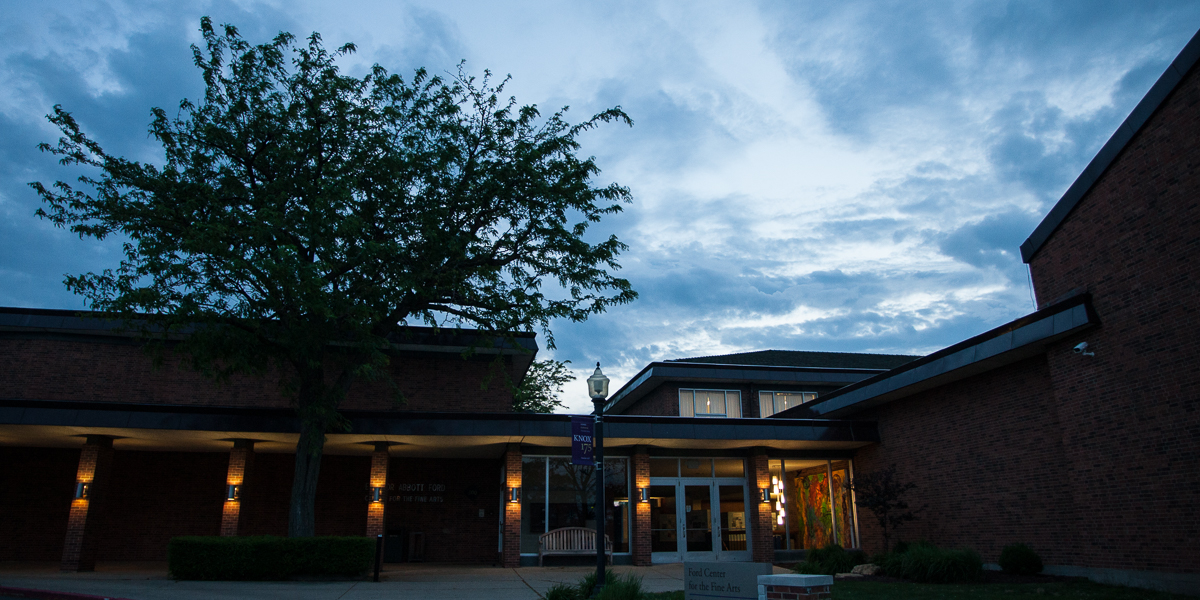

Venture Boldly

Explore other offices & services
Career Success, Bastian Family Center for
College Engagement, Office of Advancement
Community Service, Mark & Jeannette Kleine Center for
Disability Support Services, Office of
Global Studies, Eleanor Stellyes Center for
Government & Community Relations, Office of
Immigration & International Travel Communications
Information Technology Services
Institutional Research, Office of
International Student Services, Office of
Knox Advisory Committee on Socially Responsible Investing
Research & Advanced Study, Gerald & Carol Vovis Center for
Student Development, Division of
Student Financial Services, Office of

When you register for HORIZONS, you will need to choose how you want to present your work -- as a poster or oral presentation. If you choose an oral presentation, please review the following:
The oral presentation session of HORIZONS will look a lot like an academic conference. Presenters will each be given the time slot and room in which they will be presenting. Most presenters will prepare a 12-minute presentation. After their presentation, the presenter should be ready to engage in about 3 minutes of Q&A from the audience. The Q&A will be moderated by a faculty moderator in the room. Groups will run slightly differently:
Not sure how long your presentation will be/should be? Email horizons@knox.edu.
Students who completed a research or creative project during the academic year 2024-2025 and received funding the from the Vovis Center.
Most presenters should prepare a 12-minute presentation and be ready for 3 minutes of Q&A from the audience. A faculty moderator will be in the room to help facilitate the Q&A after each presentation.
Not sure how long your presentation will be/should be? Email horizons@knox.edu.
Your final presentation should be formatted according to the following guidelines. Your presentation will be uploaded into the room that you are assigned to on the day of the event, so all you need to do is show up.
Slides
The Vovis Center requires students to upload their presentation in PPTX format. You are welcome to incorporate a mix of text, pictures, graphics, etc in your slides. Remember the time limit for your presentation. Also, keep in mind that you should have notes prepared to accompany your slides -- do not read directly from your slides during your presentation! See more presentation tips here.
Video
If you wish to incorporate video into your slides, make sure to mention it to the faculty moderator in your room the night of HORIZONS. The moderator will have to be ready to help get the video to play.
The typical organization for an academic presentation varies by discipline, but the below is a good guideline. Ask your faculty mentor if you’re not sure what organization you should use. Here is an example from the social sciences to give you an idea:
Research shows that images help with memory and learning. Use this to your advantage by finding appropriate images that help you make your point. All visuals (text and images) should be clear, simple, and free of clutter.
Try to use some visuals and keep long text-heavy slides to a minimum.
Graphs should be clearly labeled and as simple as possible. Think hard about the best format for each graph. A graph in a presentation should have a title that refers to the variables shown on the graph. Graphs are generally preferable to tables.
The audience for HORIZONS will be varied; it could include students and faculty from across all disciplines, parents, staff, administrators, and alumni. Assume that no one knows anything about your topic and let that guide the language (and lingo) you use. Minimize the use of acronyms and unnecessary technical terms, and omit unnecessary details. When acronyms are used, clearly define them at appropriate times. Think about: how will you get and keep your audience’s attention and interest?
You should practice your presentation in full a few times; ideally at least one time with your faculty mentor. You might feel silly delivering your presentation to a mirror or your roommate, but you need to do it and do it again. Practice to ensure that your presentation fits within the time parameters and that it flows. Also remember to prepare for the Q&A! What questions might you receive? Think those through and how you would answer them.